First Drive: 1988 Zimmer QuickSilver

"The nail that sticks up will be hammered down." It's a proverb attributed to the Japanese, the Chinese, the Koreans, whichever supposedly conformist culture is being discussed at the moment. The truth is that you don't have to leave the comfort of the forty-eight contiguous States to see any number of outstanding nails being hammered into conformity, and nowhere is this more plainly the case than in the automotive industry. The CUVs that top the sales charts today are nearly indistinguishable from each other… but were the jellybean sedans of the Nineties really any more diverse? The boxes of the decade before? The fins-and-strake cars of the American Graffiti era?
This Zimmer QuickSilver, on the other hand… this is different. You can tell from a single photo, from a glimpse of it on the road. It's unique from every angle; you might think it reminds you of something else but you'd never actually confuse it with another car. And it has a true visual trick up its sleeve: in photographs it comes across as a massive personal-luxury coupe somewhere between a Lincoln Mark V and a BMW 850i, but in the metal (er, fiberglass) it's tiny, able to hide behind any recent econocar, no taller than an '84 Corvette.
The story of Zimmer and the Quicksilver would probably fill a long book, but here's the tl;dr version: Paul Zimmer and his sons built "neo-classic" cars that recalled the Mercedes-Benzes of the pre-war era using various Fords as a base. He had an itch to build something that wasn't a replica or a tribute to anything else, using an established production car as a starting point. At the same time, a designer at General Motors named Don "D.A." Johnson was looking for someone to build a "dream car" he'd sketched in his spare time.
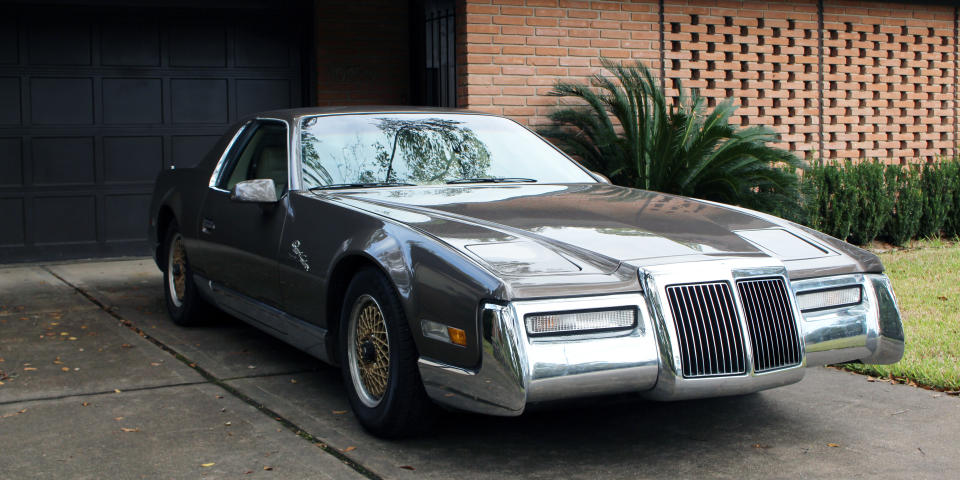
When Don met Paul, the Quicksilver was born. Each one started life as a complete Pontiac Fiero, powered by the indifferent combination of 2.8-liter V6 and three-speed automatic transmission, delivered to Zimmer's production facility in Pompano Beach, FL. The plastic body was removed and the floorpan was stretched to put an extra 16 inches between the front wheel and the A-pillar. The interior was wrapped in Italian leather and genuine wood. A small glovebox was added.
The Quicksilver's fiberglass body was a long, lean design that looked like nothing so much as a slope-nosed take on a Mark III Continental. The bumpers were big cast pieces made in Korea and chromed in America. The paint was deep and thick, the trim pieces were solid. Every care was taken in assembly and finishing; even twenty-eight years and thirty-two thousand careful miles after leaving Pompano Beach and heading to its home in Los Angeles, the metallic-brown QuickSilver I'm about to drive is within shouting distance of modern luxury-car standards for panel fit and surface quality. God knows the paint is better than any of the orange-peel specials on offer at your local BMW dealership.
My task is to cover about 1,700 miles in forty-eight hours, going from a storage unit in Azusa, CA to the home of an exotic-car collector in Houston, TX via a combination of the Interstates and the old Route 66. The Zimmer's got fresh oil but every bit of rubber in the suspension has long since called in dead and the transmission is suffering from a variety of misconceptions regarding its shift points. This doesn't look like it's going to be an easy trip.
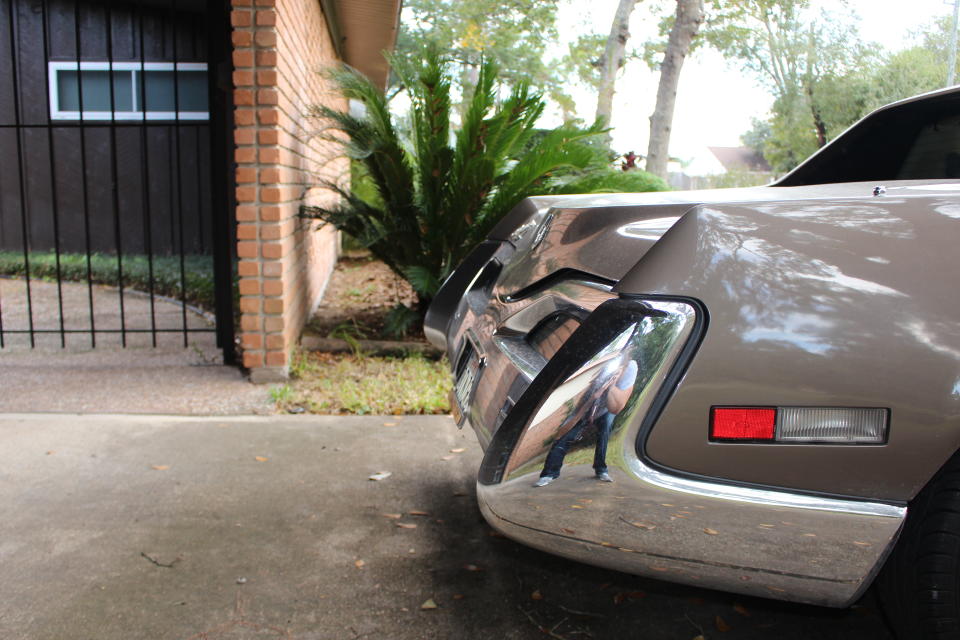
Yet right away the QuickSilver makes a case for at least part of the massive markup that separated its $52,000 retail price from the $12,000 MSRP of its Fiero donor. To begin with, there's real trunk space up front, courtesy of that floorpan stretch, all of it covered in a thick golden carpet that resembles the fur of a massive Persian car. Out back, the one-piece decklid that covered both engine and a small trunk in the Fiero has been replaced by separate releases for engine and the extended (by over a foot) cargo compartment which, of course, is lined in thick carpet as well. The Fiero was famously short on luggage space; the Zimmer is not, eagerly swallowing two RedOxx carry-on bags and a pair of laptop-filled backpacks to boot.
This was a slow car in 1988, when it was completed on an '87 Fiero chassis. With a recalcitrant transmission, it's even slower now. The brakes, too, are more of a suggestion than a command. Around town it's fine; on the freeway, it's terrifying. The new owner plans to fit a breathed-on 4.9-liter Cadillac V8, a well-understood swap that will make this brown QuickSilver finally worthy of half its name.
[contentlinks align="left" textonly="false" numbered="false" headline="Related%20Story" customtitles="Across%20The%20West%20At%20(Or%20Below)%20The%20(Speed)%20Limit" customimages="" content="article.31785"]
Unfortunately, future plans don't make any difference when you're trying to maintain 70mph on a wind-swept New Mexico freeway. Here, the Zimmer is an utter nightmare. The slab-sided extra length ahead of the cabin catches the wind, the worn-out rack-and-pinion steering (which was sourced from a European Ford-probably a Sierra-in place of the Fiero's recirculating-ball hardware, as an upgrade) isn't good at catching it, and the weight of the V6 behind you is always ready and willing to consider swapping places with the headlights on the fly. It's more tiring than any club-race stint I've ever taken. No wonder I fall asleep within five minutes of arriving in Albuquerque. At least the headlights worked, their thick fiberglass doors laid on top of the Fiero's original mechanism popping up and down as needed.
One aspect of the Pontiac donor left unfortunately untouched by Zimmer: the fuel tank. Fieros are known for having an effective eight-gallon capacity, courtesy of a misplaced fuel-pump pickup. With the headlights down, the QuickSilver is good for 22mpg; at night, that drops to twenty even. 130 miles between fuel stops is pushing it. You won't make good time over the road in this car, not least because every one of your frequent visits to a gas station will turn into a chance for you to give the full history of the Zimmer Corporation in general, and the QuickSilver in particular, to at least three people.
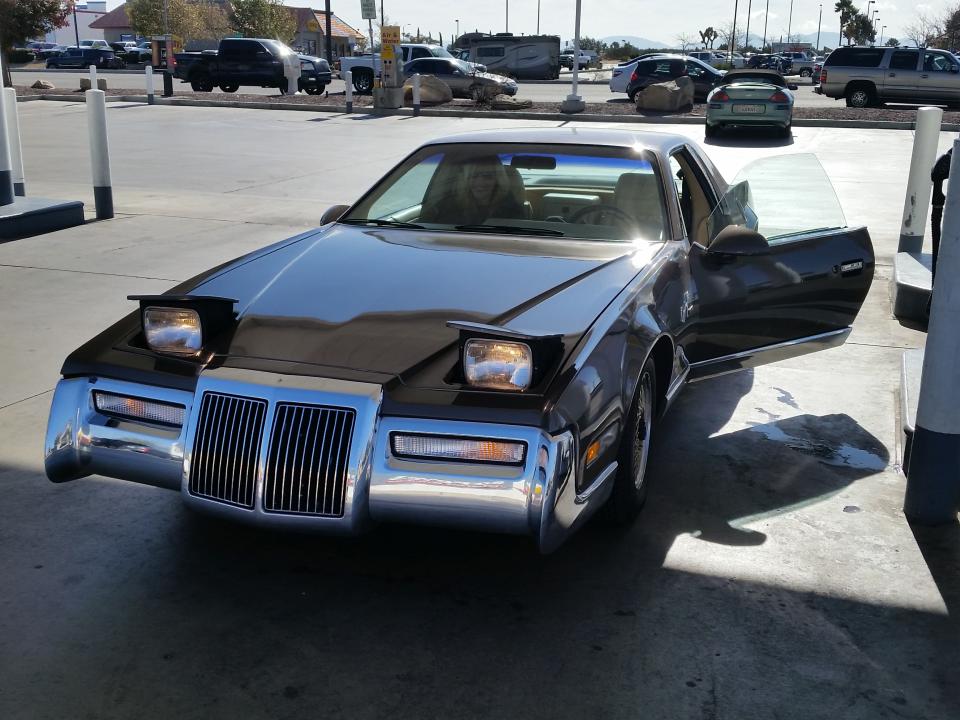
Not once in fourteen total fuel stops did a bystander correctly identify the car. But neither did I ever hear a negative comment. The Zimmer generates affection out of thin air. An elderly man in Amarillo called it "the best-looking car I've ever seen." A young black guy in an Escalade almost hit a Shell pump in reverse trying to get a better look and start a conversation about the QuickSilver; he pronounced it "lit." A group of heavily-tattooed twenty-something girls spilled out of a van outside a rest stop near Needles, California to drape themselves all over the long hood and take Instagram selfies. On a side street of a Houston suburb, two muscled young men who claimed to be intimate acquaintances of the legendary rapper "Willie D" estimated the current value of the car at "one hundred Gs, one-twenty-five if you put pokes on it. It'll gitcha the looks," I was assured, "that a Phantom can't. A Range Rover is played next to this."
Clearly, this is no car for shrinking violets. Yet the Zimmer itself seems to shrink in worrisome fashion when driven bumper-to-bumper with modern traffic. The seat height is about what you'd expect out of a modern McLaren, meaning that on Route 66 you're looking at the center caps of a lot of oversized wheels on a lot of lifted pickup trucks, the bottom door edges of which can clear the QuickSilver's roof with ease. Any brake failure at speed will likely be followed by the tinkling noise of a trailer hitch entering the passenger compartment via the front windshield. No form of driver assistance exists to keep this fragile vintage automobile from testing its minimal crash resistance. After thirty hours behind its wheel, even a Chevy Spark would feel like a Brinks truck.
Which makes the fundamental fitness for purpose of this seven-eights-scale personal-luxury coupe that much more surprising. There's more than enough room for me and my five-foot nine (she says five-foot eight, but she's lying) wife to stretch out and enjoy ourselves on the road. The seats are simply superb; I can get out of a new Rolls-Royce Wraith with a sore back after a long day but the Zimmer never troubled my thrice-broken spine. Once you habituate yourself to long-forgotten standards of General Motors accessory function (how do you turn on the wipers? Twist the left stalk, naturally) the QuickSilver is a cinch to operate. It's nearly silent at speed, the uncultured moan of the narrow-angle V6 entirely whisked away by the wind and not an errant whistle or aerodynamic moan to be heard anywhere.
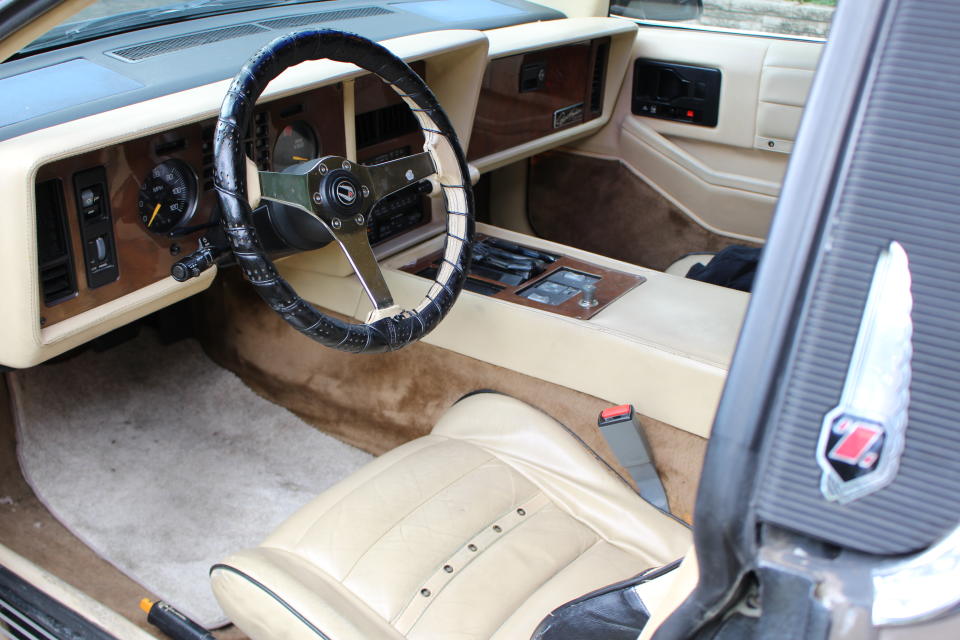
In fact, once its new owner gets a decent powertrain in the thing, puts new bushings all the way around, replaces the tires, and re-glues the headliner, this will be a brilliant cruiser that is easily on par for comfort with almost any other two-seater money can buy. It's more than enough to convince you that D.A. Johnson's original idea was more than serviceable. Two people can travel in unique style and they can bring plenty of luggage with them. More than you could fit in a Boxster or an SLK, to be sure.
It's also enough to make you wonder if this same idea wouldn't have legs in the modern world. We have perhaps passed the point in history where anyone feels comfortable without at least five seats, four doors, a bulbous hatch behind, and a half-foot's worth of useless space below, but if anything could tempt wealthy Boomers out of their luxury crossovers it would be this sort of eminently stylish standout. It couldn't look like this-even in 1988, the Zimmer was a bit too chromed-up and formal-roofed to attract the attention of the aesthetically educated-but it should have a similar visual impact, translated for the modern era.
The last car to try putting a new body on an existing two-seater, to my recollection, was either the Chrysler Crossfire or the Cadillac XLR. Neither of them were as comfortable in their own skin as is this Florida Fiero, although the XLR's sharp-edged vertical design language probably owes an unacknowledged debt to the QuickSilver. I'd like to see some gutsy manufacturer take another shot at the idea. But it will take more than just a mild restyle or a conservative alternative look to make the proper impact. You'll need flash. You'll need style. You'll need a look that genuinely stands out. Something to make people turn their heads the way this humble old kit-car-by-any-other-name can. In other words, you'll need a nail that stands up. And one that, unlike the slightly sleepy Zimmer, encourages its owners to put the hammer down.
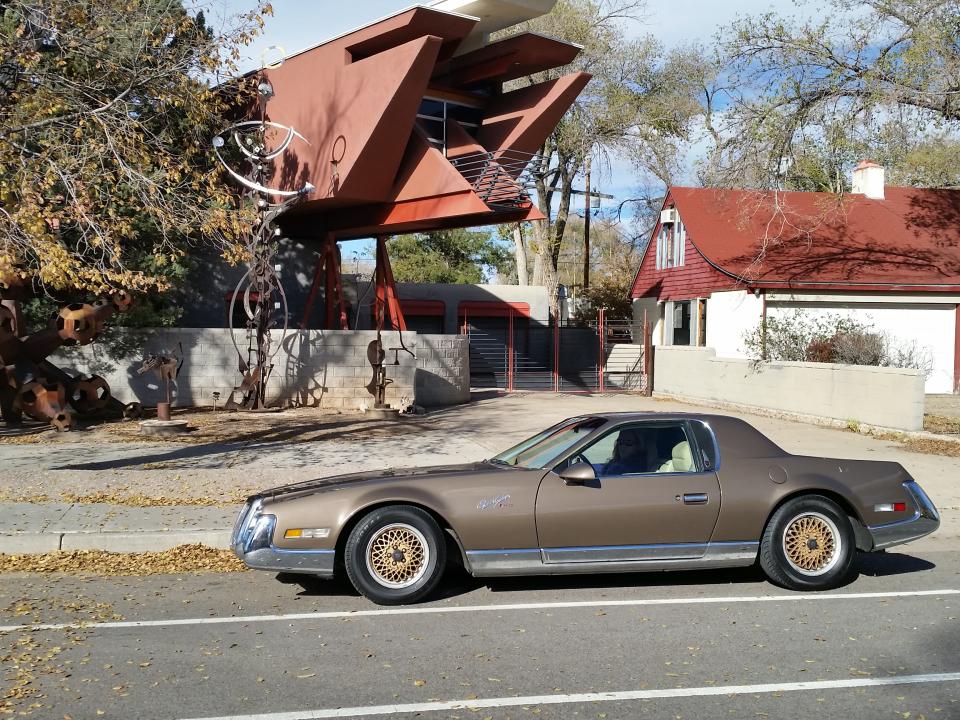
You Might Also Like

 Yahoo Autos
Yahoo Autos 